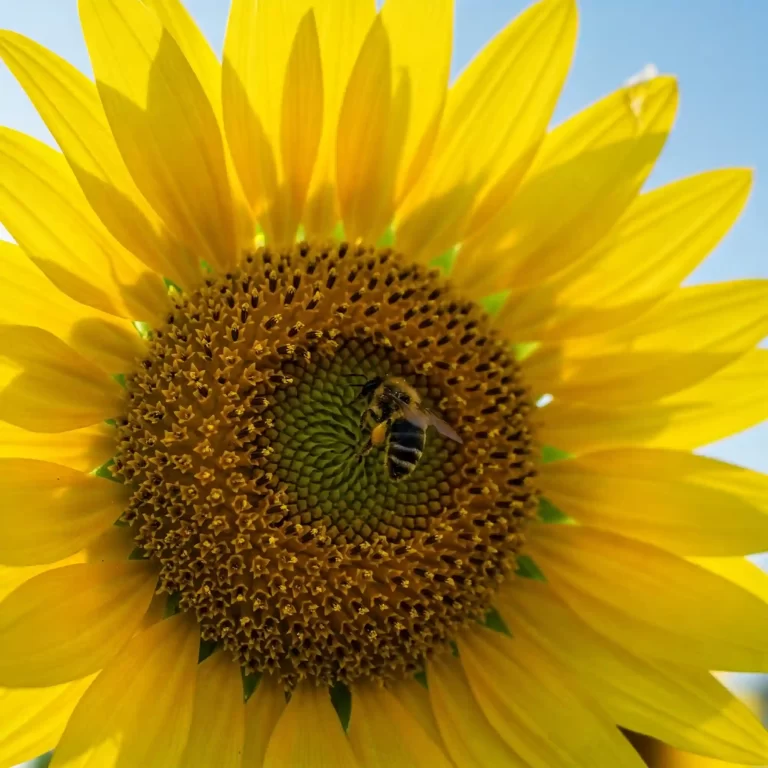| – Plant last names are surnames that are derived from the names of plants, flowers, trees, herbs, and other botanical sources. |
| – Plant last names can help you find your connection to the plant world, learn about your origin, meaning, and history, and discover your symbolism, culture, and popularity. |
| – This article will guide you through four steps to find your plant name: using a plant name generator, searching for plant name data, interpreting plant name etymology, and exploring plant name symbolism. |
| – By following these steps, you will be able to find a unique and creative plant name, or inspire yourself to create your own plant name based on your preferences and criteria. |
Have you ever wondered if your last name has a connection to the plant world? If you have a surname like Rose, Lilly, Ivy, Basil, Holly, or Sage, you may already know that your name comes from the name of a plant, flower, tree, herb, or other botanical source. But what if your last name is not so obvious? What if you want to find a plant name that matches your personality, heritage, or identity?
Plant last names are more common and diverse than you may think. They can be found in many languages, cultures, and regions of the world. They can have different origins, meanings, and histories. They can also have different symbolic associations, such as color, shape, scent, season, and emotion. Plant last names can be a great way to express your connection to nature, your heritage, or your personality.
In this article, we will help you find your plant name, or inspire you to create your own plant name based on your preferences and criteria. We will guide you through four steps to find your plant name: using a plant name generator, searching for plant name data, interpreting plant name etymology, and exploring plant name symbolism. By following these steps, you will be able to find a unique and creative plant name, or inspire yourself to create your own plant name based on your preferences and criteria.
How to Use a Plant Name Generator
A plant name generator is a tool that can generate random or customized plant names for characters, places, or products. A plant name generator can help you find a unique and creative plant name, or inspire you to create your own plant name based on your preferences and criteria.
There are many plant name generators available online, each with different features and options. Some of them are:
- Fantasy Name Generators: This website has a variety of plant name generators, such as flower name generator, tree name generator, herb name generator, and more. You can choose a category or theme, and generate up to 10 names at a time. You can also modify or combine the generated names to create your own plant name.
- Name Generator Fun: This website has a plant name generator that can generate names based on different types of plants, such as flowers, trees, herbs, fruits, vegetables, and more. You can choose a type of plant, and generate up to 50 names at a time. You can also customize the generated names by adding prefixes, suffixes, or adjectives.
- Name Generator: This website has a plant name generator that can generate names based on different criteria, such as gender, style, origin, and meaning. You can choose a criterion, and generate up to 20 names at a time. You can also check the availability and meaning of the generated names.
Here are some tips and best practices for using a plant name generator:
- Choose a category or theme that suits your purpose. For example, if you want to find a plant name for a character, you may want to choose a category that matches their personality, appearance, or role. If you want to find a plant name for a place, you may want to choose a category that matches its location, climate, or function. If you want to find a plant name for a product, you may want to choose a category that matches its use, benefit, or feature.
- Experiment with different options and settings. For example, you can try different types of plants, genders, styles, origins, and meanings. You can also try different prefixes, suffixes, or adjectives to modify the generated names. You may find some surprising or interesting combinations that you like.
- Combine or modify the generated names to create your own plant name. For example, you can mix and match the generated names to create a new name, such as Rosewood, Ivyana, or Basilios. You can also change the spelling, pronunciation, or order of the generated names to create a unique name, such as Rhoze, Yvi, or Silab.
- Check the availability and meaning of the names. For example, you can use a search engine, a social media platform, or a domain name registrar to see if the name is already taken or used by someone or something else. You can also use a dictionary, an encyclopedia, or a name database to see if the name has a specific or hidden meaning or association.
How to Search for Plant Name Data
Plant name data is information about the scientific names, classification, distribution, and description of plants. Plant name data can help you learn more about the plant that your name is derived from, or find a plant that matches your name or personality.
There are many sources of plant name data available online, each with different types of data and quality. Some of them are:
- International Plant Names Index: This is a database that provides nomenclatural data for the scientific names of vascular plants. You can search for a plant name by its scientific name, author, publication, or family. You can also browse the database by alphabetical order or by family.
- The Plant List: This is a website that provides a comprehensive list of all known plant species. You can search for a plant name by its scientific name, common name, or family. You can also filter and sort the results by status, rank, confidence, and source.
- Plants Database: This is a website that provides information about the plants of the United States and its territories. You can search for a plant name by its scientific name, common name, symbol, or family. You can also browse the database by category, such as native, introduced, wetland, or endangered.
Here are some tips and best practices for searching for plant name data:
- Use the correct spelling and format of the plant name. For example, you should use the scientific name of the plant, which is usually composed of two words: the genus name and the species name. You should also capitalize the first letter of the genus name, and use italics for the whole name. For example, the scientific name of rose is Rosa, and the scientific name of ivy is Hedera.
- Filter and sort the results by relevance and quality. For example, you should look for the most recent, reliable, and authoritative sources of data, such as peer-reviewed journals, reputable organizations, or official databases. You should also look for the most relevant, specific, and accurate data, such as the accepted name, the synonym name, the common name, the family name, the distribution, and the description of the plant.
- Compare and verify the data from different sources. For example, you should check if the data is consistent, complete, and correct across different sources. You should also check if the data is updated, revised, or corrected by the original or other sources. You should also check if the data is supported, disputed, or challenged by other sources.
- Cite the sources properly. For example, you should give credit to the original or primary sources of data, such as the authors, editors, publishers, or websites. You should also follow the appropriate citation style, such as APA, MLA, or Chicago. You should also provide the full and accurate information, such as the title, date, URL, or DOI of the source.
How to Interpret Plant Name Etymology
Plant name etymology is the study of the origin and meaning of plant names. Plant name etymology can help you understand the history and evolution of your plant name, or find a plant name that reflects your heritage or identity.
There are many sources of plant name etymology available online, each with different types and levels of detail. Some of them are:
- Behind the Name: This is a website that provides the meaning, history, and origin of names. You can search for a plant name by its name, gender, usage, or category. You can also browse the website by alphabetical order or by category, such as surname, given name, or place name.
- Ancestry: This is a website that provides the meaning, origin, and distribution of surnames. You can search for a plant name by its surname, or browse the website by alphabetical order or by region, such as Europe, Asia, Africa, or America.
- Wikipedia: This is a website that provides a free online encyclopedia that anyone can edit. You can search for a plant name by its name, or browse the website by category, such as list of plant family names with etymologies, list of plant genera named for people, or list of plants named after animals.
Here are some tips and best practices for interpreting plant name etymology:
- Look for the root words, prefixes, and suffixes of the plant name. For example, you can find the root words, prefixes, and suffixes of the plant name that indicate its origin, meaning, or function. For example, the plant name Rose comes from the Latin word rosa, which means rose. The plant name Ivy comes from the Old English word ifig, which means ivy. The plant name Basil comes from the Greek word basileus, which means king.
- Trace the linguistic and geographic origins of the plant name. For example, you can find out which language or culture the plant name came from, and how it spread or changed over time and space. For example, the plant name Lilly comes from the Old French word lilie, which comes from the Latin word lilium, which comes from the Greek word leirion, which means lily. The plant name Lilly is common in many European countries, such as France, England, Germany, and Italy.
- Consider the historical and cultural context of the plant name. For example, you can find out if the plant name has any historical or cultural significance, such as being associated with a person, a place, an event, a religion, a myth, or a legend. For example, the plant name Holly comes from the Old English word holegn, which means holly. The plant name Holly is often used as a symbol of Christmas, as it was used to decorate homes and churches in ancient times.
- Be aware of the possible variations and meanings of the plant name. For example, you should know that the plant name may have different spellings, pronunciations, or forms depending on the language, dialect, or region. You should also know that the plant name may have different meanings or connotations depending on the context, tone, or intention. For example, the plant name Thorne comes from the Old English word þorn, which means thorn. The plant name Thorne can be spelled as Thorn, Thorne, or Thorns. The plant name Thorne can also mean a source of pain, trouble, or annoyance, or a symbol of protection, defense, or strength.
How to Explore Plant Name Symbolism
Plant name symbolism is the use of plants to represent or convey certain meanings, emotions, or concepts. Plant name symbolism can help you discover the hidden or deeper significance of your plant name, or find a plant name that expresses your feelings or values.
There are many types of plant name symbolism, such as color, shape, scent, season, and culture. There are also many sources of plant name symbolism, such as flower meaning, tree symbolism, and herb magic. Some of them are:
- Flower Meaning: This is a website that provides the meaning, symbolism, and history of flowers. You can search for a flower name by its name, color, or occasion. You can also browse the website by alphabetical order or by category, such as birth month, zodiac sign, or anniversary.
- Tree Symbolism: This is a website that provides the meaning, symbolism, and history of trees. You can search for a tree name by its name, type, or region. You can also browse the website by alphabetical order or by category, such as Celtic, Native American, or Chinese.
- Herb Magic: This is a website that provides the meaning, symbolism, and use of herbs. You can search for a herb name by its name, property, or purpose. You can also browse the website by alphabetical order or by category, such as love, protection, or healing.
Here are some tips and best practices for exploring plant name symbolism:
- Research the different symbolic associations of the plant name. For example, you should look for the different meanings, emotions, or concepts that the plant name can represent or convey, such as color, shape, scent, season, and culture. For example, the plant name Rose can symbolize love, beauty, and romance, as well as passion, courage, and sacrifice. The plant name Rose can also have different meanings depending on its color, such as red for love, yellow for friendship, or white for purity.
- Compare and contrast the positive and negative aspects of the plant name. For example, you should look for the different advantages and disadvantages, strengths and weaknesses, or opportunities and threats that the plant name can imply or suggest, such as benefit, harm, or challenge. For example, the plant name Ivy can symbolize fidelity, friendship, and eternity, as well as clinginess, jealousy, and death. The plant name Ivy can also have different aspects depending on its growth, such as climbing, spreading, or covering.
- Personalize and apply the plant name symbolism to your own life. For example, you should look for the different ways that the plant name can relate or resonate with your own personality, experience, or situation, such as identity, expression, or aspiration. For example, the plant name Basil can symbolize royalty, courage, and faith, as well as wisdom, health, and longevity. The plant name Basil can also have different applications depending on its use, such as cooking, medicine, or perfume.
- Respect the diversity and subjectivity of plant name symbolism. For example, you should know that the plant name symbolism may vary or change depending on the source, context, or perspective, such as origin, culture, or opinion. You should also know that the plant name symbolism may not be universal, absolute, or definitive, but rather personal, relative, or interpretive. For example, the plant name Holly can symbolize joy, peace, and protection, as well as luck, magic, and power. The plant name Holly can also have different meanings depending on the source, such as Christian, pagan, or Celtic.
Conclusion
In this article, we have helped you find your plant name, or inspire you to create your own plant name based on your preferences and criteria. We have guided you through four steps to find your plant name: using a plant name generator, searching for plant name data, interpreting plant name etymology, and exploring plant name symbolism. By following these steps, you have been able to find a unique and creative plant name, or inspire yourself to create your own plant name based on your preferences and criteria.
We hope that you have enjoyed this article and learned something new and interesting about plant last names. We also hope that you have found your connection to the plant world, learned about your origin, meaning, and history, and discovered your symbolism, culture, and popularity.
If you have any questions, comments, or feedback, please feel free to share them with us. We would love to hear from you and learn more about your plant name or story. You can also check out our other related articles or resources for more information and inspiration.
Thank you for reading and happy planting!




[…] in length and 3 inches in width. The leaves have serrated or saw blade-like edges, which give the plant its common names, such as tiger tooth, chainsaw, or jungle boogie. The leaves are dark green in color, with a glossy […]